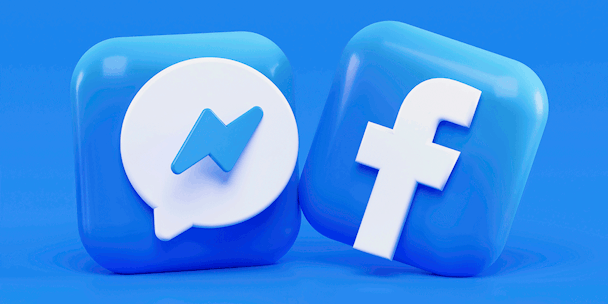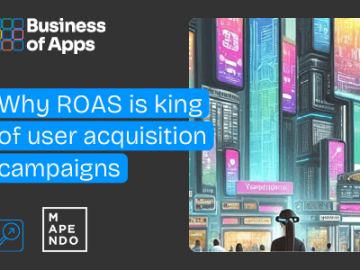As organic reach declines on Meta in priority of paid impressions, building an in-app community is becoming a popular, alternative strategy for app businesses. In this article, we look at three ways in which native, in-app community features can help your brand drive revenue on mobile.
Humans are social creatures. We rely on each other to navigate the world, share our thoughts, ask for help, and celebrate our wins. There are many century-old communities that still exist today because they share a common way of communicating.
It’s no different with app users. As app businesses build their own natively integrated social tools, they are able to fully control the user experience, build tighter-knit communities for users to express themselves, and can make product improvements based directly on the social engagement data that they collect.
Strong in-app communities have turned apps like Pokémon Go, Komoot, Poshmark, Nike Run Club, and Peloton into successful social media platforms in their own right.
A discussion on the topic of community building within apps recently took place on the Apptivate podcast, hosted by the mobile marketing specialists at Remerge. Since Apptivate’s inception five years ago, Remerge has interviewed over 180 mobile marketing experts on the show. Among them is Amadeus Norén, the director of product marketing at Amity, a company that helps apps launch, grow, and monetize their digital communities. Amity provides SDKs to companies for social features like activity feeds, groups, messaging, chats, videos, and live streams. As part of the platform, they also offer artificial intelligence (AI) analytics and moderation features, allowing apps to better quantify user engagement and interactions.
Throughout the discussion, Amadeus sheds light on the advantages of in-app communities. He explains how app businesses can benefit from the social data that they generate within their communities, and how the users themselves can be served better content to enhance their in-app experience.
Why brands are moving away from traditional social networks
Amadeus observed an increased demand of companies that want to take ownership of their own communities. “I think niche social networks, or social networks for specific verticals are going to continue to increase,” he said. “If users are coming to these specific communities, they want something that’s catered to them”.
The popularity of built-in social features among independent apps can be attributed to the changing business models of mainstream social networks. “10 years ago, an organic post on Facebook could reach 20 to 50 percent of your followers. Today, it’s down to 1 percent,” explained Amadeus in reference to how Facebook has made the paid ad model the standard for any business to get attention. This means that on top of all the effort to gain followers, brands need to pay to get their message across. While paying for exposure is nothing new in advertising, brands shouldn’t rely solely on mainstream platforms to serve their community.

Amadeus picks an example from his current portfolio called Noom, a fitness tracking app. His team built a community feature called ‘Noom Circles’ where users can share their progress with others, cheer each other on, and stay motivated in their fitness journey — all while keeping the users’ communication within the app itself. On top of being able to moderate user-generated content and weed out the spam posts and abusive language that external platforms are prone to, Noom and Amity can use community insights to improve Noom’s user journey and ensure it remains aligned with their brand values.
Another downside of relying on the major social networks to host user communications is that you cannot quantify or export your community’s interaction data. You are also bound by the platform’s terms, which is a loss because all of those precious user insights that could guide your future marketing strategies are not accessible to you. Amadeus says that by hosting the conversations in your own app, “you can take all of the data from conversations that are happening within your in-app community, analyze it with AI, and make smarter decisions for the future.”
3 tips for leveraging your in-app community to drive revenue
1. Place attractive community features behind a paywall
If you focus on developing high quality in-app features, and make the very best ones available on a pay-to-use basis, your customers will be more likely to pay for them. User retention starts by allowing free access to basic community tools, and revenue can be derived from monetizing more sophisticated features like direct messaging or access to exclusive groups. Language tandem app HelloTalk for example matches users around the world so they can take part in free, online language exchanges. However, they also offer a special, paid membership that allows users to connect with potential practice partners who actually live nearby. This can facilitate in-person practice sessions and an improved learning experience for the user.
Based on the statistics that Amity has gathered, apps with social features can boost retention by up to 40%. If there’s a welcoming community for your users to return to, they will be more likely to continue using your app. Who knows, they might invite other people to jump onboard as well!

2. Run ads that are relevant to your community
Amadeus finds that when an app has an active community, users will return regularly to see new posts and updates. He explains, “When you have a community in which users are constantly generating content, they will keep scrolling through it on the app.”
Being able to gain and maintain the attention of your users in this way is where ads enter the picture. You can monetize unused space within your app in a few different ways. Firstly, you can self promote your own app by using available space to advertise native features or even upsell your existing customers who may be interested in upgrading to paid subscriptions and premium features.
Another way to generate ad revenue is to work with a supply side partner (SSP), who can help you to auction off the ad space in your app to the highest-bidding, third-party advertisers that aspire to advertise their products within your app. It’s worth noting that if you run in-app ads from advertisers with a similar target audience to your own, the ads will be more relevant for your users and therefore drive up conversions. Achieving good conversion rates on your in-app ads will mean that the demand side platforms (DSPs) who buy the ad space, will be willing to pay more for it in the first place – thus leaving you with a bigger overall cut. To go a step further, you can even analyze your users’ in-app behavior and preferences to determine which types of ad placements will be most effective for third party advertisers.
On the other hand, if you want to advertise your own app to both new and existing users, you can locate and target them within the other apps that they are using. So in addition to selling ad space within your own app, you can also capitalize on ad space in other apps. Again, it’s important to consider running your ads only in third-party apps whose audiences and communities are similar to your own. This ensures that ads remain relevant and drive conversions. By partnering with a DSP like Remerge to place these ads, it’s even possible to create personalized ads and messaging that are dynamically personalized to your users – based on the data that you’ve internally collected on them.
Our team at Remerge has been running these kinds of in-app advertising campaigns for over a decade, and recently published this comprehensive guide on in-app retargeting which you can check out for free to learn more.

3. Do co-marketing with brands who have similar communities
If your community is highly engaged within your app, other brands will want to be part of it. The best brand partners are the ones who complement the function of your app and have a similar audience or community for you to leverage. For example, an app selling second-hand furniture could partner with van rental companies and home improvement businesses. For navigation apps, partners like service stations or quick-serve restaurant chains could be good matches.
Let’s say you own a fitness tracker app and are partnered with a health supplement brand. Why not offer your user a promo code for them to use on your partner’s store? It’s a win-win scenario. Your users get a discount, your partner gets exposure and revenue, and your app earns a commission on any sales. By working with brands that are aligned with your users’ values, you strengthen your brand’s credibility and attract more people to be a part of something bigger. After all, sharing a common purpose is the backbone of any strong and healthy community.
Conclusion
So, why should apps consider building their communities internally? Ultimately, it creates a better experience for the user and it brings about strategic advantages for your business. Rather than having user interactions contained in an environment you can’t control or analyze, be sure to dedicate some space in your app for community features. With a more open communication line between you and your users, you’ll be able to create a space that serves your community better than the classic social networks do. More importantly, you can learn a great deal from the user engagements that take place. Whatever happens on your app, should stay in your app.
To keep your community active and engaged, you can set up in-app retargeting campaigns by partnering with an established mobile advertising partner like Remerge. You can also discover more community-building insights by listening to the full interview with Amadeus Norén on the Apptivate podcast and check out more episodes to hear from other thought leaders in the app marketing space.




